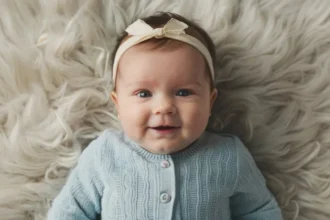Introduction to wallpaper:znvmimg_hwe= stitch
Wallpaper:znvmimg_hwe= stitch is more than just a design choice; it’s a statement. As home decor evolves, stitched textures are weaving their way into our spaces, adding depth and warmth like never before. Imagine walking into a room where the walls seem to tell a story—each stitch reflecting craftsmanship and creativity. This trend doesn’t just enhance aesthetics; it transforms your environment into something cozy and inviting.
From sophisticated dining rooms to serene bedrooms, stitched wallpaper:znvmimg_hwe= stitch can elevate any area of your home. Its tactile quality invites curiosity while providing an element of comfort that flat surfaces simply can’t match. If you’re looking for ways to infuse character and charm into your interiors, exploring the world of stitched textures might be exactly what you need. Let’s unravel this captivating trend together!
The Rise of Stitched wallpaper:znvmimg_hwe= stitch and Fabrics
Stitched wallpaper:znvmimg_hwe= stitch has emerged as a captivating trend in the world of interior design. This innovative approach combines the warmth of textiles with the practicality of wall coverings, creating a unique aesthetic appeal.
Homeowners and designers alike are drawn to its tactile qualities. The intricate stitching adds depth and character to spaces that traditional wallpaper simply cannot achieve.
As sustainability becomes more crucial, stitched fabrics offer an eco-friendly alternative by utilizing leftover materials creatively. These designs evoke a sense of handcrafted artistry, making each piece feel truly one-of-a-kind.
The rise of stitched textures also reflects our desire for comfort in our living environments. They invite touch while effortlessly enhancing visual interest across various styles—from bohemian to modern chic—making them versatile additions for any room.
Different Techniques for Creating Stitched Textures
Stitched textures can transform ordinary spaces into extraordinary ones. Several techniques bring this tactile trend to life.
One popular method involves using machine embroidery. This technique allows intricate patterns and designs that add depth and character to walls. The precision of machines creates uniformity, making it suitable for modern interiors.
Hand stitching is another approach, offering a unique charm. Each piece becomes an individual artwork, perfect for eclectic styles. It’s labor-intensive but yields one-of-a-kind results that resonate with warmth and personality.
Another creative option includes fabric panels layered with stitched elements. This adds dimension while allowing flexibility in design choices—ideal for renters or those wanting temporary solutions.
Digital printing technology has entered the fray, enabling designers to replicate stitched looks onto wallpaper seamlessly. It combines traditional aesthetics with contemporary convenience, appealing to various tastes in home decor.
Incorporating Stitched Textures in Various Rooms
Stitched textures can bring a cozy and inviting feel to any room. In the living area, consider using stitched wallpaper behind a sofa or as an accent wall. This creates depth and visual interest without overwhelming the space.
In bedrooms, soft stitched fabrics for headboards or throw pillows add warmth. These textiles create an intimate atmosphere that promotes relaxation.
Kitchens can also benefit from this trend. Stitched patterns on curtains or table linens provide a touch of charm. They invite comfort into what is often a busy environment.
Don’t overlook bathrooms either! A stitched design in towels or shower curtains introduces texture that elevates your daily routine.
By thoughtfully incorporating these elements, each room transforms into a haven of style and comfort, showcasing personality through unique textures.
Color and Pattern Options for Stitched Wallpapers and Fabrics
When it comes to stitched wallpapers and fabrics, the variety of colors and patterns is virtually limitless. Bold hues like deep indigos or vibrant yellows can evoke strong emotions, while softer pastels offer a more serene atmosphere.
Patterns play a crucial role in defining spaces. Geometric shapes add a modern touch, while floral designs bring in an organic feel. For those who appreciate tradition, classic damask patterns provide timeless elegance.
Layering different textures within your color palette can create depth and interest. Consider combining stitched elements with smooth surfaces for contrast that truly stands out.
Don’t shy away from experimenting with scale either. Large motifs make dramatic statements, whereas smaller prints can complement existing decor without overwhelming it. Finding the right balance ensures your space feels cohesive yet dynamic.
Maintenance and Care of Stitched Products wallpaper:znvmimg_hwe= stitch
Maintaining stitched products requires a gentle touch. Regular dusting with a soft cloth helps keep the surface clean and free from debris.
For deeper cleaning, a damp sponge is your best friend. Avoid harsh chemicals that could damage the intricate textures. Instead, opt for mild soap solutions if necessary.
Stitched wallpapers can be sensitive to moisture. Ensure proper ventilation in rooms where they’re installed to prevent mold or mildew buildup.
If you notice any loose threads or fraying, address it right away. A simple stitch with matching thread can restore its appearance without compromising the design.
Always refer to manufacturer guidelines for specific care instructions tailored to your particular wallpaper:znvmimg_hwe= stitch product. Taking these steps will help preserve their beauty and longevity while enhancing your interior space’s charm.
Conclusion: wallpaper:znvmimg_hwe= stitch
Stitched textures are transforming the way we approach interior design. The tactile quality they bring adds depth and warmth to any space.
These wallpapers invite touch, making a room feel more inviting. Their unique patterns can be a beautiful focal point or serve as subtle backdrops.
As homeowners seek individuality in their decor, wallpaper:znvmimg_hwe= stitch provides an innovative solution. It allows for creativity while maintaining elegance.
Whether you opt for bold designs or soft hues, these stitched products cater to diverse tastes. They seamlessly blend tradition with modern aesthetics.
Incorporating stitched elements is not just about style; it’s a statement of personal expression in your living environment.
FAQs
Q: What is wallpaper:znvmimg_hwe= stitch?
A: Wallpaper:znvmimg_hwe= stitch refers to a design trend that incorporates stitched textures and patterns into wallpapers and fabrics. This style adds depth, warmth, and character to interiors.
Q: How can I incorporate stitched textures in my home?
A: You can easily incorporate stitched textures by choosing wallpaper or fabric with these designs for feature walls, upholstery, or soft furnishings like cushions and throws. Mix and match different types to create visual interest.
Q: Are there specific rooms where stitched wallpaper works best?
A: Stitched wallpaper can enhance the beauty of any room but works particularly well in spaces like living rooms, bedrooms, or even cozy nooks. It creates a welcoming atmosphere wherever it’s placed.
Q: What color options are available for stitched wallpapers?
A: You’ll find an array of colors ranging from muted tones to vibrant shades. Neutral palettes offer versatility while bold hues make statements. Patterns often combine multiple colors for added dynamism.
Q: How do I clean and maintain stitched products?
A: Maintenance varies depending on the material used. Generally, you should follow manufacturer instructions for cleaning methods. Regular dusting is also recommended to keep them looking fresh without damage.
Q: Can I mix different textures along with stitched wallpapers?
A: Absolutely! Mixing various textures such as smooth surfaces with rougher fabrics enhances your décor’s complexity. Just ensure your choices harmonize through complementary colors or patterns for a cohesive look.

















